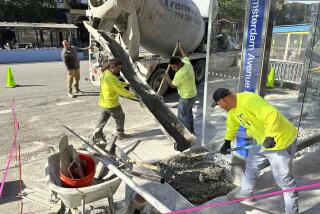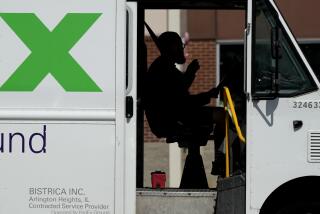U.S. payrolls shrink for first time in 7 years: Hurricanes walloped job growth

Hurricanes Harvey and Irma walloped the labor market last month, causing the nation to lose jobs for the first time in seven years, the Labor Department said Friday.
Total nonfarm employment declined by a net 33,000 jobs in September compared with an upwardly revised gain of 169,000 the previous month. The Labor Department said 1.5 million workers — the most in 20 years — were not at their jobs during the survey week last month because of bad weather.
Restaurants and bars took the biggest hit. Total employment in September declined by 105,000 “as many workers were off payrolls due to the recent hurricanes,” the Labor Department said.
The sector had averaged job growth of 24,000 over the previous 12 months.
“We’ve very confident those jobs are coming back,” Gary Cohn, the top White House economic advisor, told Fox Business Network.
Analysts had expected the major hurricanes that devastated large parts of Texas and Florida would significantly reduce job growth in September, but the decline was much bigger than expected.
“The first thing that comes to mind here is the scene in ‘The Wizard of Oz,’ where we hear the line, ‘Pay no attention to the man behind the curtain,’” said Mark Hamrick, senior economic analyst at financial information website Bankrate.com.
“Because of the impacts from hurricanes and flooding, the decline reported in September payrolls doesn’t carry weight this time around,” he said.
Although much of the report will be discounted because of the temporary weather effects, there were some good signs.
The unemployment rate, which is calculated differently, declined to 4.2% in September, from 4.4% the previous month. That was the lowest level since 2001.
And average hourly earnings jumped 12 cents in September to $26.55. That was the biggest increase since 2007. For the 12 months that ended Sept. 30, wages were up 2.9%, well above the low inflation rate.
“These are really great numbers,” Cohn said of the wage growth. “It just shows President Trump’s economic agenda is really working.”
But the unusually sharp wage growth was probably a temporary boost related to the hurricane, said Gus Faucher, chief economist at PNC Financial Services Group. With so many lower-wage restaurant and bar workers out of the calculation, average earnings got an artificial bump up, he said.
”My guess is that was skewed,” Faucher said.
Economists expect the job market to rebound from the hurricane damage in coming months as workers get back to their jobs and rebuilding begins.
“We should get a boost over the months ahead because you’re going to have reconstruction efforts from insurance payments and federal aid,” Faucher said. “We’re going to make up for it late 2017 and early 2018.”
Patrick Schaffer, global investment specialist with J.P. Morgan Private Bank in Los Angeles, said people should not be concerned by the one-month job decline because other data show the economy remains strong.
“We are seeing really strong, broad-based economic growth in the U.S., and we are also seeing an acceleration of growth internationally,” he said.
Federal Reserve Chairwoman Janet L. Yellen warned on Sept. 20 that “the hurricanes severely disrupted the labor market in the affected areas” and that the nation’s employment levels last month might be “substantially affected.”
Economic growth in the third quarter of the year also would be “held down by the severe disruptions” caused by the hurricanes but likely will bounce back, Yellen said at a news conference.
“Based on past experience, these effects are unlikely to materially alter the course of the national economy beyond the next couple of quarters,” she said.
Because of that, the hurricanes probably won’t stop the Fed from raising a key interest rate again by the end of the year, analysts said. On Friday, Investors put the odds of a small rate hike in December at 87%, according to the FedWatch tool of the CME Group futures exchange.
Market participates are also looking through this as they continue to expect the fed to raise rates in December.
Hurricane Harvey hit Texas on Aug. 25, and Hurricane Irma hit Florida on Sept. 10.
The Federal Emergency Management Agency declared 87 counties in the two states as disaster areas. Those counties have about 11.2 million workers — 7.7% of the nation’s non-farm labor force, the Labor Department said.
The jobs report does not include the U.S. Virgin Islands or Puerto Rico.
If a worker didn’t receive any pay for the survey pay period, which is in the middle of the month, the Labor Department considered that person unemployed. Businesses that were destroyed or could not be contacted by the Labor Department because of storm damage would affect the jobs numbers as well.
There are 23,000 employers in the 87 disaster-declaration counties included in the Labor Department’s monthly survey of about 147,000 businesses and government agencies.
The unemployment rate is calculated through a survey of 60,000 households.
Twitter: @JimPuzzanghera
ALSO
Tropical Storm Nate takes aim at Mexico and the U.S. after dousing Central America
Storm tracker: Nate kills threatens the Gulf Coast
Automakers post strong gains on hurricane replacement sales
After Harvey hit, one Texas nursing home evacuation began with a gun drawn
UPDATES:
10:40 a.m.: This article was updated with comments from Federal Reserve Chairwoman Janet L. Yellen.
8:10 a.m.: This article was updated with comments from Gary Cohn, the top White House economic advisor, and from Patrick Schaffer of J.P. Morgan Private Bank in Los Angeles.
6:40 a.m.: This article was updated with comments from Gus Faucher of PNC Financial Services Group and additional details.
5:55 a.m.: This article was updated with staff reporting and additional details.
5:30 a.m.: This article was updated with figures from the Labor Department report.
This article was originally published at 3:50 a.m.







